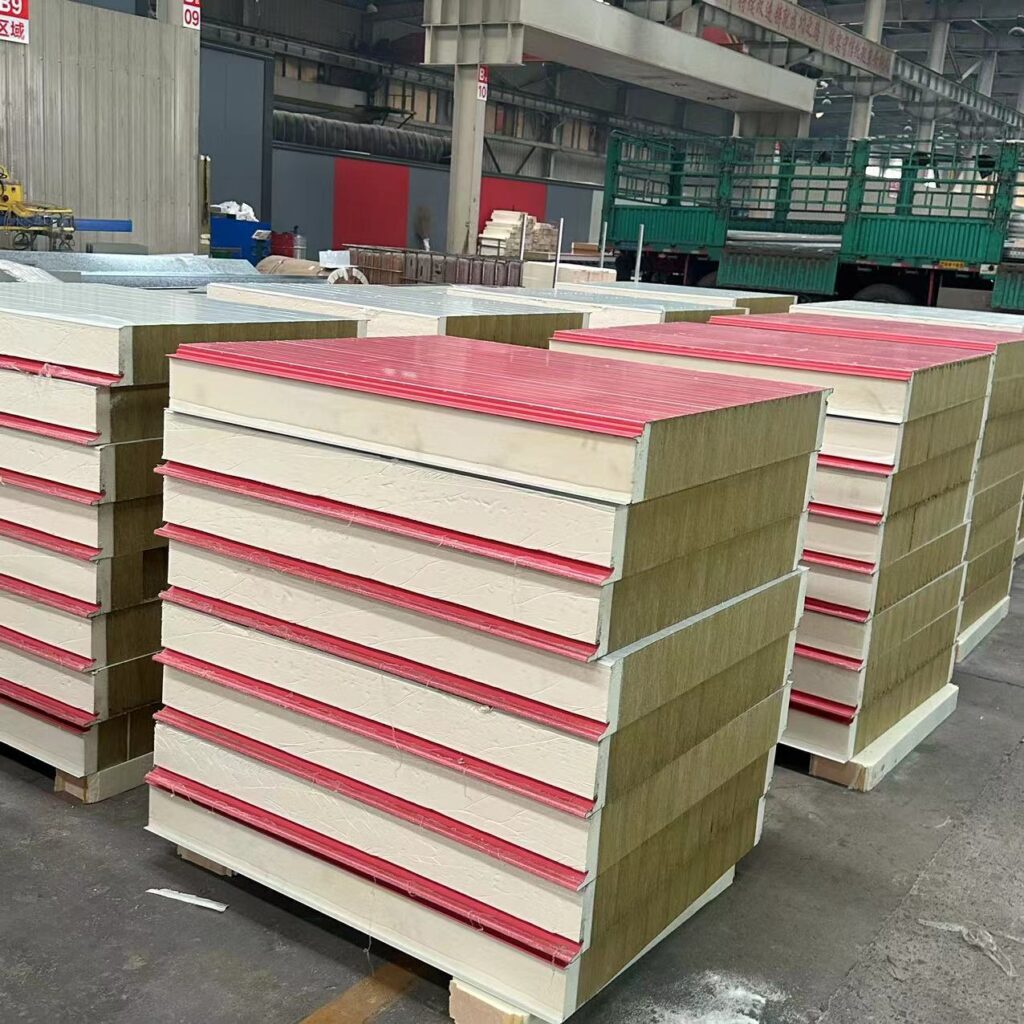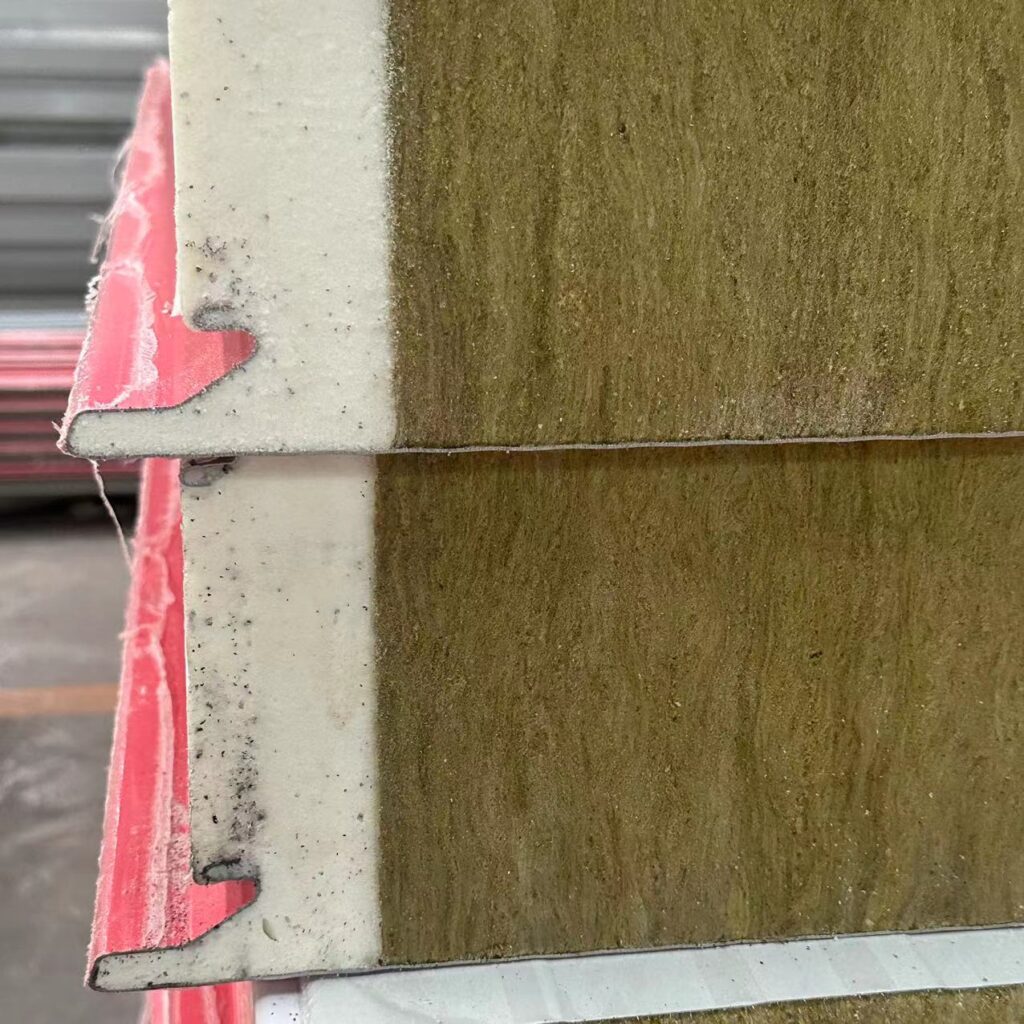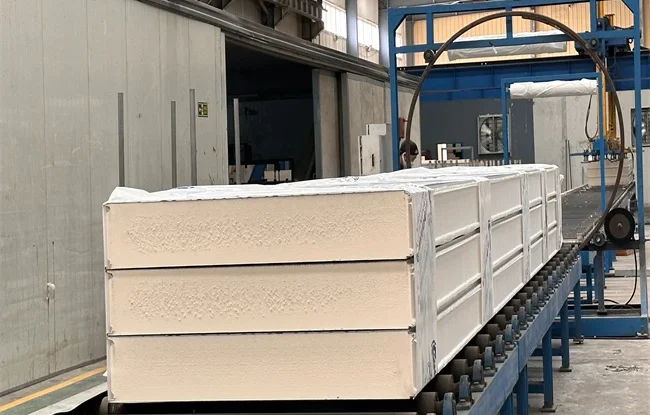There are many types of cold storage panels. Based on the core filling material, they can be classified into polyurethane, polystyrene, rock wool, and fiberglass panels. Based on their intended purpose, there are also fireproof and moisture-proof panels, among others. These types are often used in special cold storage facilities, such as those for chemical or medical purposes. Based on the different metal surfaces, panels can be further divided into color steel, stainless steel, and aluminum alloy panels. Generally, panels are primarily distinguished by their core material.
Polyurethane Cold Storage Panels
Polyurethane panels are currently the most common type. Compared to other materials, polyurethane has a lower thermal conductivity. Therefore, polyurethane panels provide superior insulation. For example, when building a cold storage facility with a temperature of -18°C, a 100 mm thick polyurethane panel offers better insulation than a 150 mm thick polystyrene panel.
However, a disadvantage of polyurethane panels is their sensitivity to water. This is particularly evident when the cold storage door seal is faulty, leading to high indoor humidity, or when the drainage is poor. In chronically damp environments, the edges of polyurethane panels can easily deform. Therefore, special attention must be paid to drainage and moisture prevention when using polyurethane panels.

Polystyrene Cold Storage Panels
Polystyrene panels are the lowest-cost option among the various types. Typically, they are at least 15% cheaper than polyurethane panels. Using polystyrene panels can indeed reduce construction costs. However, this can create hidden risks for long-term use and maintenance of the cold storage. Because polystyrene panels have lower structural strength. When goods are excessive or too heavy, EPS panels are prone to cracking and damage.
Thus, EPS panels are only suitable for temporary cold storage facilities or for storing lightweight goods like vegetables.
Rock Wool Cold Storage Panels
Rock wool panels have the highest fire resistance rating among the various cold storage panels. They are very suitable for cold storage facilities with high fire safety requirements, such as those storing chemical raw materials.
But, similar to polyurethane panels, a drawback of rock wool panels is their fear of water and moisture. When the air humidity exceeds 70%, the rock wool material can absorb moisture from the air and become damp. The insulation performance of the panel plummets as a result. Additionally, issues like insufficient core density and easily damaged edges are very common.

Because rock wool is essentially made of stone fibers, gaps can inevitably appear between the fibers no matter how much they are compressed. After long-term use, the rock wool material at the edges of the panels can fall out, which adds to subsequent maintenance troubles. Recently, rock wool panels with polyurethane-sealed edges have emerged. This type of panel enhances edge sealing, effectively solving the problems associated with standard rock wool panels. Harbin Dong’an Building Sheets Company can provide you with such polyurethane-edged rock wool sandwich panels.
Fiberglass Cold Storage Panels
Fiberglass panels offer excellent fire resistance and are cheaper than rock wool. However, the thermal insulation performance of fiberglass panels is relatively poor. This can cause the refrigeration equipment to run for prolonged periods, increasing the risk of damage and leading to higher energy consumption.
I hope this information can help you better understand the types of cold storage panels.







Leave A Comment